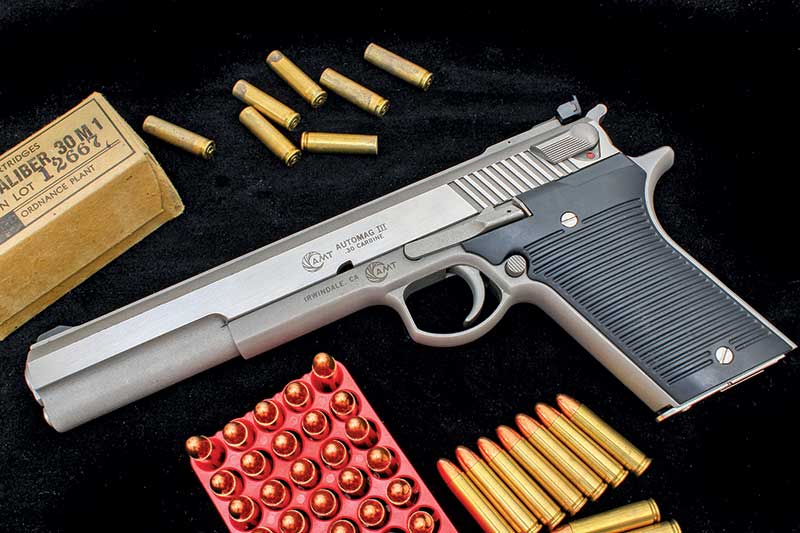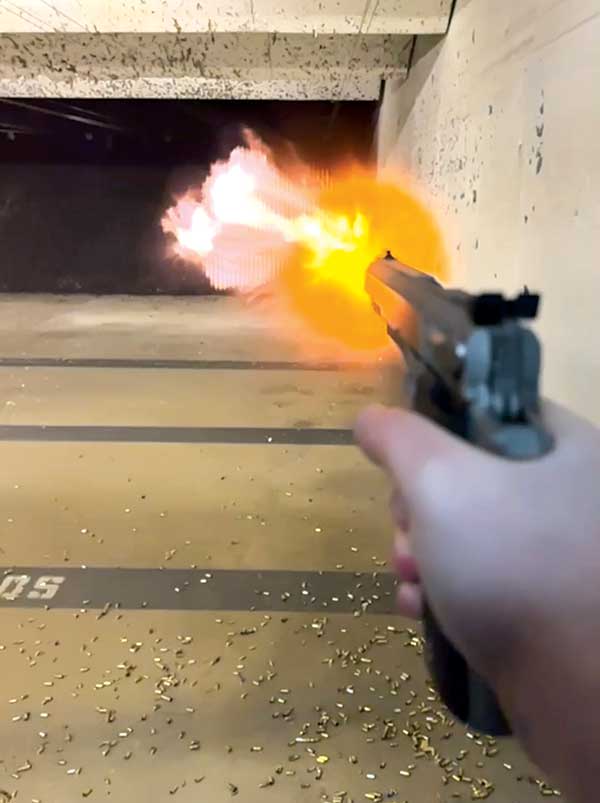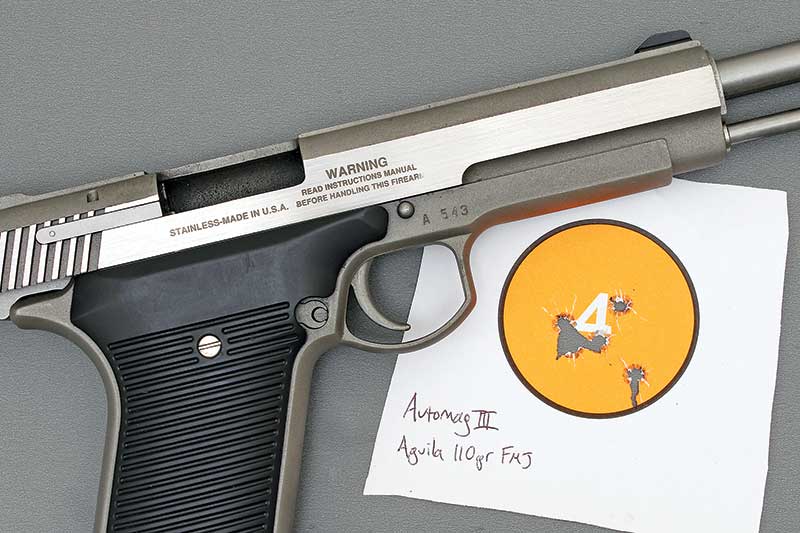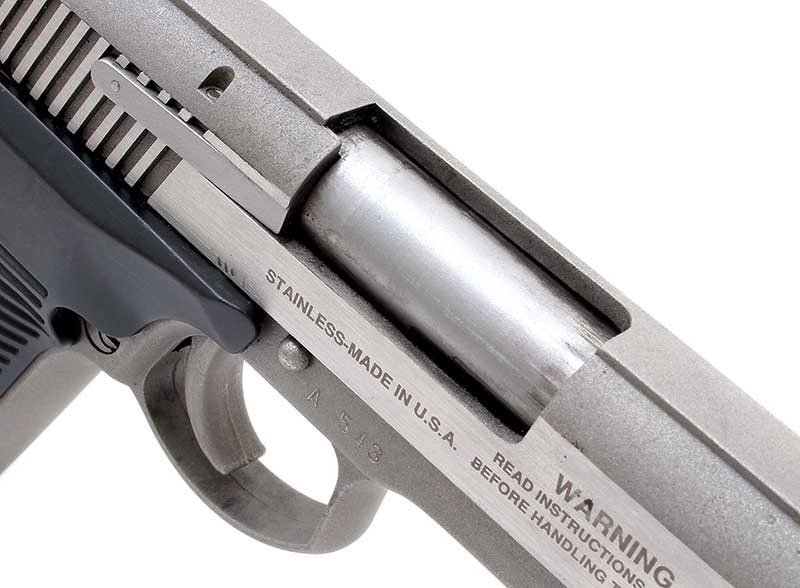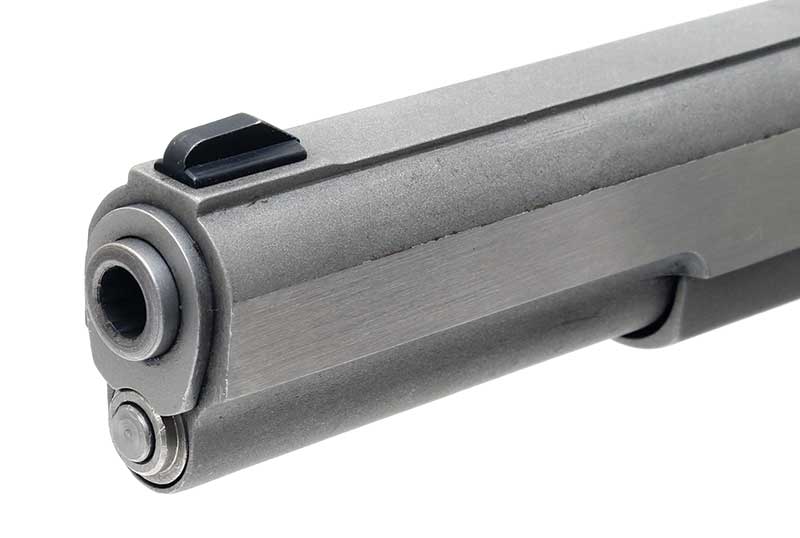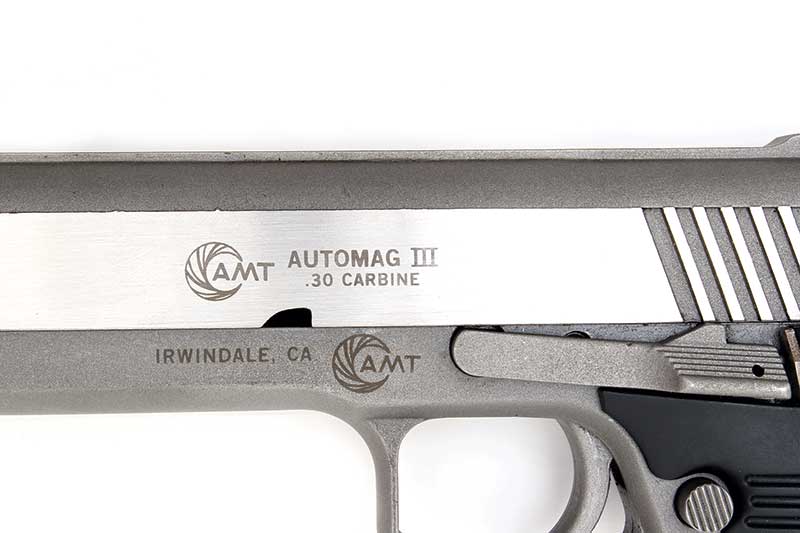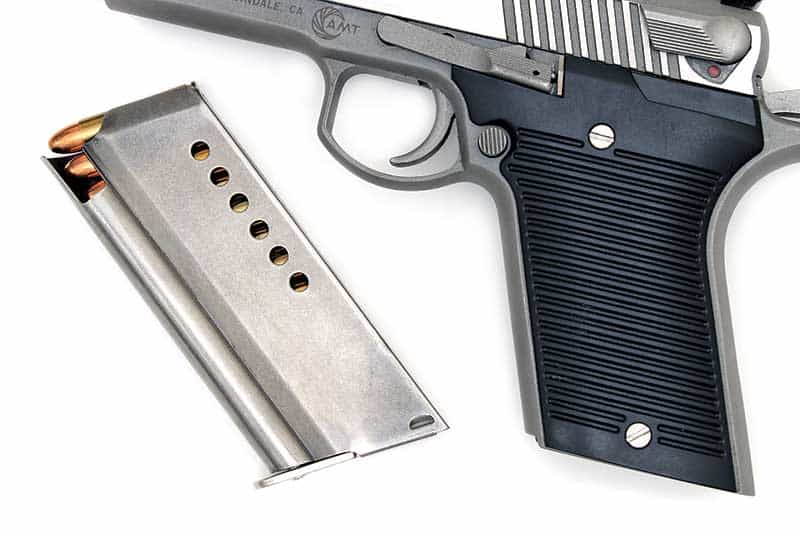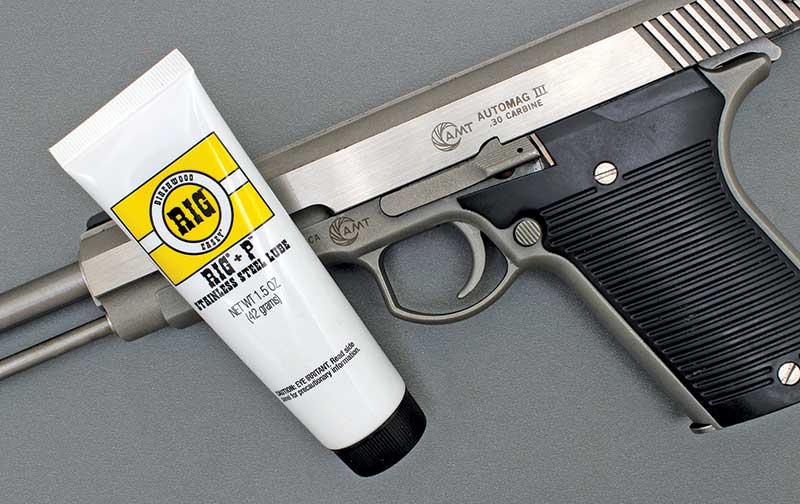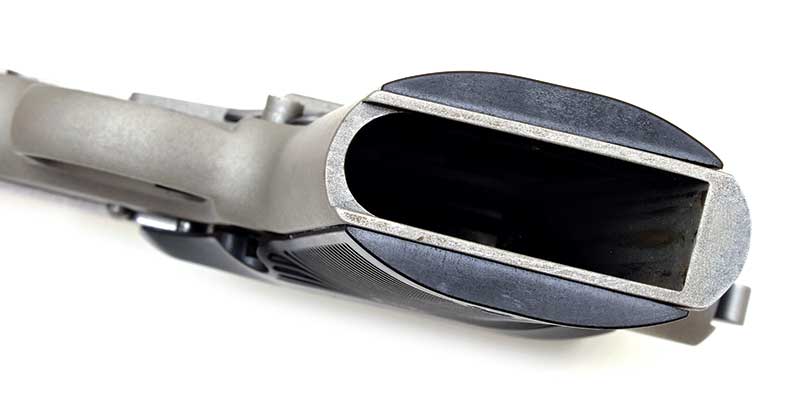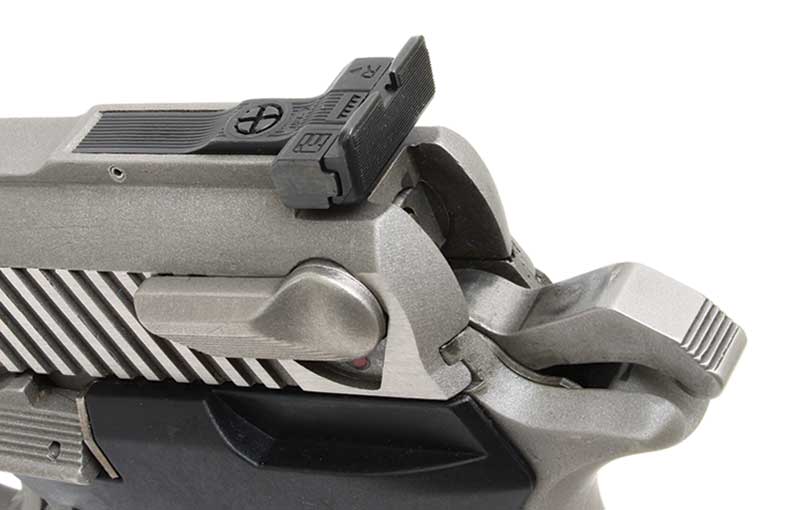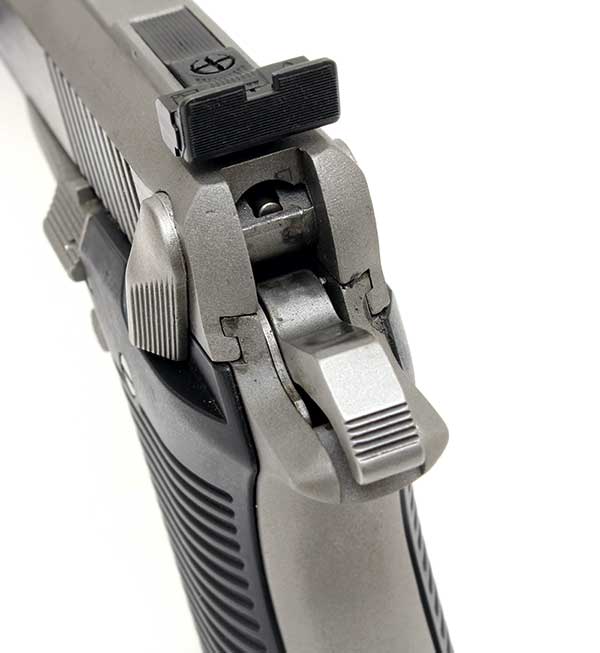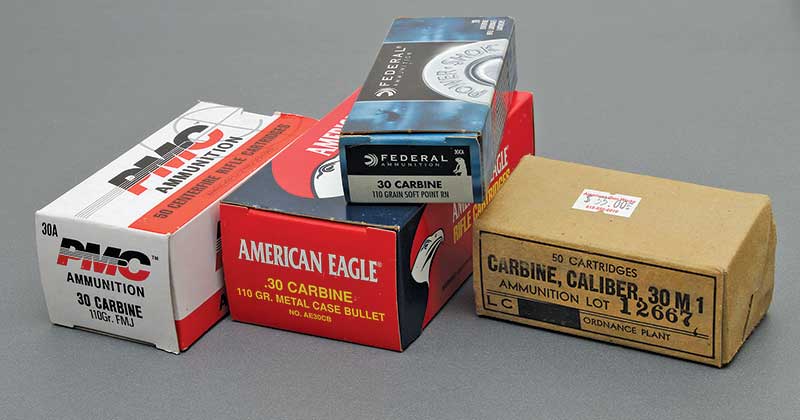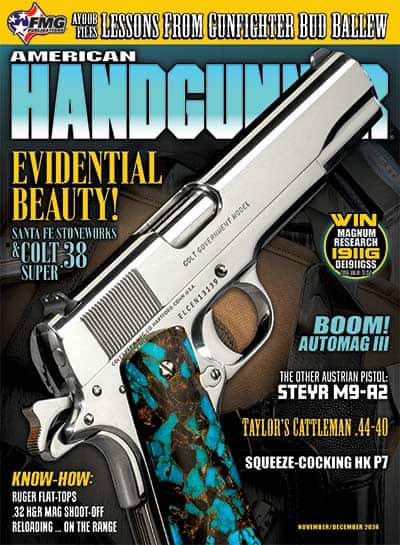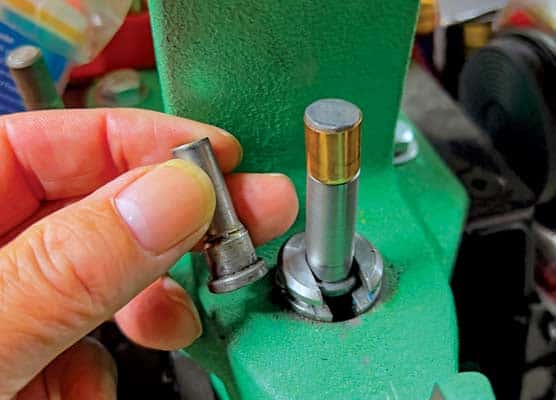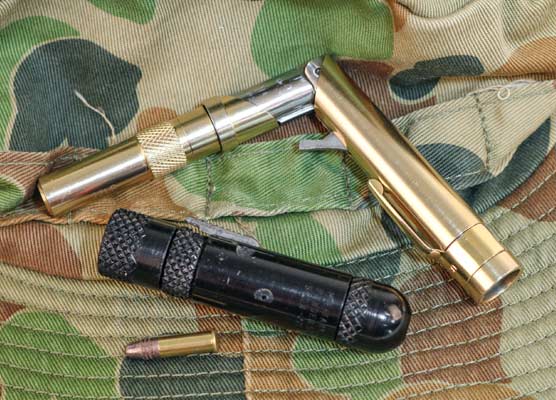Automag III .30 Carbine Review
Still the King of BOOM!
Certain periods of firearm design are especially enchanting to handgunners. Many of us drool over the guns that defined the American West, including S&W “Schofield” top-breaks and Colt’s famous 1873 Single Action Army. Similarly, there is no shortage of those who collect arms from the first two World Wars, and GI-style 1911s still tug at the heartstrings of many. Then, there’s the postwar period — again, golden ages for Colt and Smith and Wesson and for recreational shooting in general.
There are even those who believe the times in which we live are the best we’ve ever had as shooters! It’s an opinion many come by quite honestly: Manufacturers are working tirelessly to give marksmen of all stripes designs that are more accurate and more reliable than ever before, and the various entertainment and competition ecosystems that comprise gun culture are quite healthy. A collection of modern handguns might consist of nothing but polymer-framed, striker-fired designs, and though some of us might jokingly refer to these guns as “combat Tupperware” from time to time, such guns are beloved by their many owners.
For me, one period of handgunning seems particularly maligned, however. It even tends to be unsung among our own pages! Roughly, we could call it the later “cold war” period of firearms, stretching from about the mid-’70s through the mid-1990s. It was a time when autoloaders were honestly competing with revolvers for market share and police contracts, and — with all credit due to the pioneering work of Gaston Glock — handguns were still primarily a “real steel” affair.
I’d argue this was also a period when the gun industry was less dominated by MBAs, shareholder demands, and assiduous focus testing and market research. Many companies developed oddball designs (and many went under) in the pursuit of carving out a new niche. Not coincidentally, it was a big era for magnum handgunning, as companies continued to throw new firearms and cartridges out there in an effort to see what would stick.
The Automag III is very much a product of its time: a big-ass, goofy hot rod of a gun that certainly wasn’t perfect. Nevertheless, it remained an object of my desire. After finally adding one to my collection, let me tell you: This thing turns heads in 2024 just as well as it did over 30 years ago.
A Little History
One can’t talk about the AMT Corporation (Arcadia Machine and Tool) without mentioning Harry Sanford. I never met Harry, but the stories about him are the stuff of legend: The heart of the company was a huge dude — physically and in character — who had a powerful handshake and was never afraid to take a risk.
In the early 1970s, Sanford and a designer by the name of Max Gera noticed that the world lacked an autoloading handgun in .44 Magnum, and so they set out to make one — losing money, incidentally, on each hand-built gun that left their factory.
Few can keep track of the complete history of AMT as it shuffled through a number of names, locations, and corporate entities, including TDE, OMC, IAI, Galena Industries, and back again to AMT. The companies’ constant financial troubles were certainly not helped by Sanford’s decision to produce unlicensed copies of both Ruger’s 10/22 and its “Mark” line of .22 handguns (both, curiously, called the AMT Lightning), requiring what I can only imagine was a princely sum to settle Ruger’s very legitimate lawsuit.
Say what you will about Sanford and his horse sense as a businessman, but he certainly knew cool, and he had no qualms about repeatedly bringing cool guns to the market.
Of Its Time And Place
The Automag III is equal parts remarkable and challenging — an AMT design in a nutshell. On one hand, the gun was eminently practical: There was still a lot of surplus .30 Carbine floating around in the early 1990s, and the company designed a niche handgun to gobble up that supply. As far as I know, it’s one of only two autoloading pistols built for the .30 Carbine, and the other (the Kimball automatic) is, at best, a footnote in firearms history.
Additionally, AMT didn’t need to reinvent the proverbial wheel. The gun operates and takes down mostly like a 1911, barring a few quirks, so cleaning and basic maintenance has a very familiar “manual of arms,” so to speak. The barrel bushing, in particular, is nearly identical to the type found on John Browning’s most famous pistol.
At the same time, just about any sensible person might look at the .30 carbine round and ask, “Isn’t this round a little long to stuff into an autoloader? Wouldn’t the magazines be really odd-looking?” And the answer to those questions is a resounding yes!
Make no mistake: The Automag III is weird and ungainly. It kind of feels like holding one of those big “universal” TV remotes in your hand lengthwise. As a small-handed guy, the pad of my index finger just manages to reach the trigger. Ergonomically, it is decidedly not great.
I’d be remiss not to mention that the Automag III shares many hallmarks of AMT’s execution and build quality overall. Plagued throughout its production history by financial woes, the company used some inferior stainless steel compounds as a means of keeping already excessive production costs in check. Their guns — including the Automag III — had a reputation of galling if not properly lubricated. What’s galling, you ask? A phenomenon whereby two flat metal surfaces can tear away at one another through excessive friction, especially when rubbing together at high speeds. Yikes.
While I suspect I got one of the better ones, my Automag III works most of the time, with a preference for the hotter-loaded American Eagle and “blue box” Federal JSPs. My friend Jeff Bregman, owner and gunsmith at American Gun Works, suggested I pick up a tube of Rig +P, a lubricant specifically formulated to protect against galling on stainless machinery. Thus far, my Automag III seems to run well with it applied.
Lots to Love
All of that out of the way? This gun is an absolute kick in the pants. Although I have a few doubts about the long-term hardiness of the pistol (a reason I have quite a few spare parts for it), it’s remarkably usable from the shooter’s perspective. The trigger is a crisp 3.5 lbs. right on the dot, and the Millet adjustable sights are quite clean and positive — more than a foot of sight radius is a nice plus, too. Perhaps not inconsequentially, the gun is superbly accurate in my hands.
Of course, the real reason for owning an Automag III is the experience of shooting it. Touch off a round, and you’ll be treated to a two-foot plume of fire thrown from the front end. It makes a tremendous BOOM, and I guarantee shooters will crane their necks from the surrounding bays to figure out what the hell you’re running. Unquestionably louder than any of my .44 Magnums, it sounds like God himself is shouting at you.
Remember how I mentioned the gun was designed to eat mil-spec .30 Carbine ammo? Well, that same ammo normally has about 16″ of barrel to work with when shot out of your standard M1 Carbine. As a result, a lot of that slow-burning powder isn’t fully ignited when it exits only 7″ of tube. The Automag III has a long barrel, but it’s not rifle long. Such explains the pyrotechnics.
But to paraphrase my friend Sam, those ballistic qualities give you all of the magnum fun with none of the consequences. The flash is blinding. The boom is deafening, sure. Each trigger pull makes you feel like you’re discharging absolute power. And yet, the felt recoil is decidedly gentle: a tad less than a full-sized 1911 running the standard 230-grain “hardball” load. The gun is almost entirely bark on the shooter’s end with hardly any bite. It is a phenomenon that must be experienced to be believed.
Do note, however, that even out of the Automag III’s barrel, those .30 caliber pills are hustling along at a velocity of about 1,700 fps. The platform will ring steel with clear authority, and empty cases are expelled from the chamber with vigor upon recoil. It’s not just a big show: There’s performance here as well.
Is It In Your Future?
Do you expect faultless reliability when it comes to your handguns? Do you want your pistol to feel like an extension of your hand? Do you want a gun chambered for an economical round with a good supply of aftermarket parts and gunsmith support? If so, the Automag III is decidedly not the gun for you.
Now, if you do want to pull a trigger and hear a gigantic boom, and if you embrace the ear-to-ear grins that are part and parcel of magnum handgunnery, the Automag III becomes far more appealing.
Prices are steadily creeping up, especially as guys like me are absolutely willing to overpay for this alluring, oddball gun that’s long been off the market. Given the Automag III’s build quality, some have opined it isn’t a gun worth more than $1,000. It’s a fair take. All the same, I paid a considerable amount more than that to source mine. The simple truth is people become aware of this gun and want it. Furthermore, those who do find working, honest examples seldom get rid of them. I sure don’t plan to part with mine.
Likely, you’ll drool over the retro-cool pictures of this thing, much as I did for the better part of 20 years. Heck, if you’re like me, you just might find yourself silly enough to give in to the pressures of owning one of the weirdest and wildest designs of the ’90s. Buying an Automag III wasn’t the most sensible decision I’ve ever made, but it sure has led to a lot of fun!

